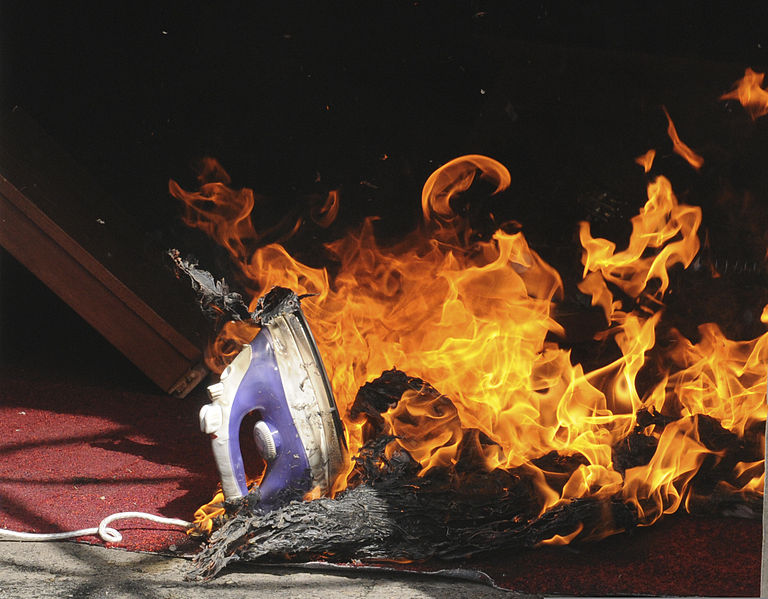Definition of Serial Arson
A Serial Arsonist is someone who habitually and compulsively sets fires. Under U.S. Law, arson is defined as "the malicious burning of the dwelling of another," though the actual crime may entail the burning of any structure or object. It has been noted that many serial arsonists are actually frustrated or disgruntled firefighters, who fall into the category of Pyromaniacs.
The FBI describes serial arson as "three or more fire setting episodes, with a characteristic emotional cooling-off period between fires". Arsonists that only set two arson fires or are arrested after setting two arson fires, are dubbed spree arsonists.
Dictionary.com. Online Etymology Dictionary. Douglas Harper, Historian.
News Report of Serial Arsonists in Research Port
The Ottewell Pyromaniac.
Author: Teel, Gina
Citation: Alberta Report 09/21/98, Vol. 25 Issue 40, p28
Abstract: Reports the activity of a serial arsonist in Edmonton, Alberta. Fifteen deliberately set fires; Total damages; Most serious fire; No leads or suspects; Comments from Edmonton police investigator Dick Kracher; No standard psychological profile for arsonists; Suspicion that the arsonist is a troubled youth.
Stalking the Seattle Specter.
Author: Methvin, Eugene H.
Citation: Reader's Digest Dec93, Vol. 143 Issue 860, p115
Abstract: Features the story of Paul Keller, a serial arsonist in Washington state. Victims; Police investigation; Psychological profile of typical serial arsonists; Arrest through the help of Keller's family.

Articles in Research Port
Factors predicting recidivism
in child and adolescent fire-setters:
A systematic review of the literature
Source: The Journal of Forensic Psychiatry & Psychology, March 2006; 17(1): 151 – 164
Authors: Patrick J. Kennedy et al.
Abstract: Fires set by young people account for a large proportion of fire-related public property damage and deaths. Law enforcement and mental health professionals alike seek ways to prevent fire-setters from repeating their criminal behaviour. This article presents a comprehensive review of empirical studies of fire-setting recidivism. The purpose of this study was to identify potential predictors of recidivism in children and adolescents who set fires. Six articles and two dissertation abstracts were selected for systematic review according to specific inclusion/ exclusion criteria. Previous involvement in fire-setting behaviour was found to be the best single predictor of recidivistic fire-setting. In addition, recidivists were noted to have greater levels of interest in fire and fire-related activities, displayed more covert antisocial behaviours, and were more likely to be male and older than non-recidivists. Recidivists also reported poorer social skills and higher levels of family dysfunction than other fire-setters. These factors should be further investigated and evaluated, and incorporated in risk assessment tools, interventions,and outcome measures.
Keywords: Fire-setting, recidivism, child, adolescent, predictors, risk assessments,intervention
Offender and crime characteristics
of female serial arsonists in Japan
Author: Wachi, Taeko, et al.
Source: Journal of Investigative Psychology & Offender Profiling, Jan 2007; 4(1):29-52
Abstract: This study of Japanese female serial arsonists examined their crimes and background characteristics. The data were a sample from the national police register containing arson cases resulting in charges in Japan between 1982 and 2005. Serial arsonists were 6% of the arson offenders and 12% of these were female, resulting in 83 female serial arsonist data sets. The mean age was 37.6 years and 43% were unemployed. Nearly half were married. Only 28% had a documented history of mental problems and 22% had a prior arrest, usually for theft (19%). Female serial arsonists are characterized by going to a place near their home with a lighter and setting fire directly to combustible materials. Non-metric multidimensional scaling was used to analyze 33 variables related to the offenses. The arsons could be differentiated in terms of either expressive or instrumental sources of action. Expressive arsons were opportunistic and impulsive acts, motivated by emotional distress. The fires were mostly set close to home. Expressive arsons were characteristic of 66% of the females. Instrumental arsons were often motivated by revenge and involved planned and goal-directed behaviours. They were committed by 13% of the females. Instrumental arsonists tended to travel further from home. Copyright (c) 2007 John Wiley & Sons, Ltd. [ABSTRACT FROM AUTHOR]
Subjects: expressive, female, instrumental, serial arsonists, ARSON, OFFENSES, against property, FEMALES, PSYCHOMETRICS
Profiling Arson
"Criminal psychological profiling is the forensic technique of inferring personal, psychological, demographic, and behavioral characteristics of offenders based on crime scene evidence. While the majority of research concerning criminal profiling has been focused on the investigation of crimes of sexual violence such as murder and rape, criminal psychological profiling is frequently described as being applicable to the investigation of serial arson crimes, and the frequency with which psychological profiling had been used in the investigation of arson crimes has been growing steadily over the past 30 years."
This excerpt is from Encyclopedia of Criminology and Criminal Justice, volume 7, page 4035. If you would like to read more, this book can be found in the Thurgood Marshall Library in the Reference Section on the main floor. The call number for this title is REF HV6017 .E5295.